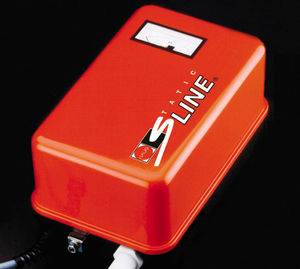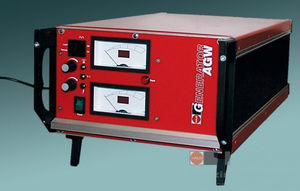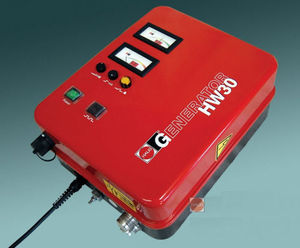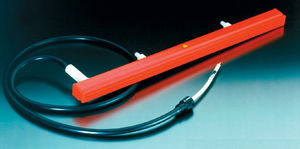
Electrostatic charge generator AG 150

Add to favorites
Compare this product
Characteristics
- Type
- electrostatic charge
Description
The HAUG charging bar ALS is suitable for most applications where material webs are to be fixed to each other. The supply to the charging bar ALS is from the charging generator AG 150 which is available with either positive or negative polarity. The direct voltage output of the charging generator can be set steplessly, and a remote option is also available.
The charging bar ALS must be fixed at a distance of some 1030 mm above the material to be charged, directly opposite a suitable counter-electrode. The charging bar ALS is available both with axial and a radial high-voltage cable connection. The high-voltage cable and the pin strip can be replaced easily.
HAUG-CHARGING SYSTEMS
HAUG charging systems are designed to apply electrostatic charges without physical contact. These systems can be used for any application where different materials are to be pinned together electrostatically. At least, one of these materials must be non-conductive. The electrostatic pinning serves to enhance subsequent processes, such as film/foil overlapping in packaging machines.
Electrostatic charges are applied using charging bars, electrodes or triodes which are supplied with positive or negative high-voltage from a steplessly adjustable charging generator. In order to charge two-dimensional or partial areas, bar-shaped electrodes or triodes are used. A resistance-coupled version for special requirements is also available.
Catalogs
No catalogs are available for this product.
See all of HAUG‘s catalogsExhibitions
Meet this supplier at the following exhibition(s):

*Prices are pre-tax. They exclude delivery charges and customs duties and do not include additional charges for installation or activation options. Prices are indicative only and may vary by country, with changes to the cost of raw materials and exchange rates.








